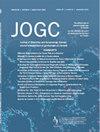妊娠中期和妊娠晚期宫颈长度与无症状早产风险妇女延长妊娠的关系
IF 2.2
Q2 OBSTETRICS & GYNECOLOGY
引用次数: 0
摘要
目的:确定经阴道超声(TVUS)在妊娠中期(T2)(160-237周)或妊娠晚期早期(T3)(240-297周)对高危早产(PTB)患者的宫颈长度(CL)是否与妊娠延长(bb10 - 410周)有关,以及是否有一个特定的CL截止值可以预测。方法:本回顾性队列研究纳入单胎妊娠个体;有自发性肺结核、宫颈切除治疗或子宫异常病史,接受TVUS CL 160-297周。T2和T3分别以CL四分位数划分结果。结果:纳入914例患者,514例在T2进行CL评估,857例在T3进行CL评估。T2时,2、3、4分位数CL患者妊娠期延长的可能性较1分位数高(aOR 2.47, P = 0.049;aOR 3.15, P = 0.009;aOR为2.73,P = 0.028)。而T2受试者操作者特征曲线下面积(AUC)为0.572,无统计学意义(P = 0.057)。在T3阶段,与四分位数1相比,四分位数3和4的CL患者更有可能延长妊娠时间(aOR 2.42,;P = 0.021, aOR为3.10,P = 0.002)。T3 ROC曲线达到统计学意义(P = 0.002, AUC = 0.622),但根据AUC值不符合良好筛选试验的标准。既往自发性PTB患者的亚组分析发现T2 ROC曲线很有希望(AUC = 0.700, P = 0.013)。结论:在有PTB风险的个体中,T3较长的CL可能比T2更好地预测妊娠延长,但在两个妊娠期似乎都不是一个好的筛查试验。建议对有早产史的人进行进一步的研究。本文章由计算机程序翻译,如有差异,请以英文原文为准。
Association of Second and Early Third Trimester Cervical Length With Prolonged Pregnancy in Asymptomatic Women at Risk of Preterm Birth
Objectives
To determine if transvaginal ultrasound cervical length (CL) in the second (T2) (160–236 weeks) or early third trimester (T3) (240–296 weeks) in individuals at increased risk of preterm birth (PTB) is associated with prolonged pregnancy (≥410 weeks), and if there is a specific CL cut-off that is predictive.
Methods
This retrospective cohort study included individuals with singleton gestations; and a history of spontaneous PTB, excisional treatment of the cervix or uterine anomaly, undergoing transvaginal ultrasound CL 160–296 weeks. Results were divided by CL quartile in T2 and T3 separately.
Results
Overall, 914 individuals were included, 514 having CL assessment in T2 and 857 in T3. In T2, those with CL in quartiles 2, 3, and 4 were more likely to have a prolonged pregnancy compared with quartile 1 (adjusted OR [aOR] 2.47, P = 0.049; aOR 3.15, P = 0.009; aOR 2.73, P = 0.028, respectively). However, the T2 receiver operator characteristic (ROC) area under the curve (AUC) (0.572) did not reach statistical significance (P = 0.057). In T3, those with CL in quartiles 3 and 4 were more likely to have a prolonged pregnancy compared with quartile 1 (aOR 2.42, P = 0.021; and aOR 3.10, P = 0.002, respectively). The T3 ROC curve reached statistical significance (P = 0.002, AUC = 0.622) but did not meet the criteria for a good screening test based on the AUC value. Subgroup analysis of those with a previous spontaneous PTB found the T2 ROC curve to be promising (AUC = 0.700, P = 0.013).
Conclusions
In individuals at risk of PTB, longer CL in T3 may be a better predictor of prolonged pregnancy than T2 but does not appear to be a good screening test in either gestational period. Further research is suggested in those with a history of PTB.
求助全文
通过发布文献求助,成功后即可免费获取论文全文。
去求助
来源期刊

Journal of obstetrics and gynaecology Canada
OBSTETRICS & GYNECOLOGY-
CiteScore
3.30
自引率
5.60%
发文量
302
审稿时长
32 days
期刊介绍:
Journal of Obstetrics and Gynaecology Canada (JOGC) is Canada"s peer-reviewed journal of obstetrics, gynaecology, and women"s health. Each monthly issue contains original research articles, reviews, case reports, commentaries, and editorials on all aspects of reproductive health. JOGC is the original publication source of evidence-based clinical guidelines, committee opinions, and policy statements that derive from standing or ad hoc committees of the Society of Obstetricians and Gynaecologists of Canada. JOGC is included in the National Library of Medicine"s MEDLINE database, and abstracts from JOGC are accessible on PubMed.
 求助内容:
求助内容: 应助结果提醒方式:
应助结果提醒方式:


